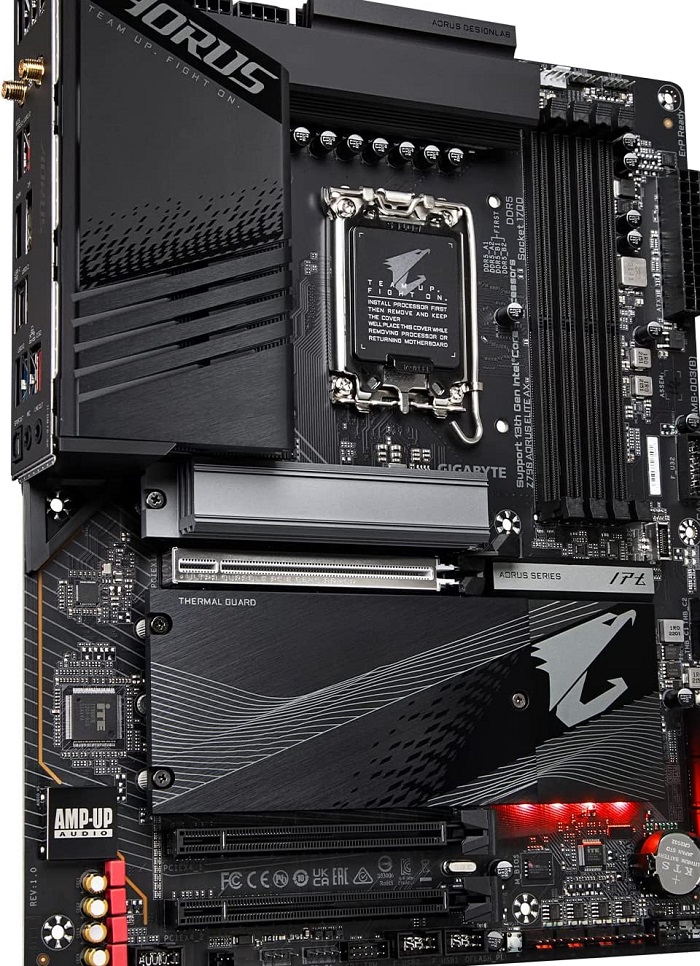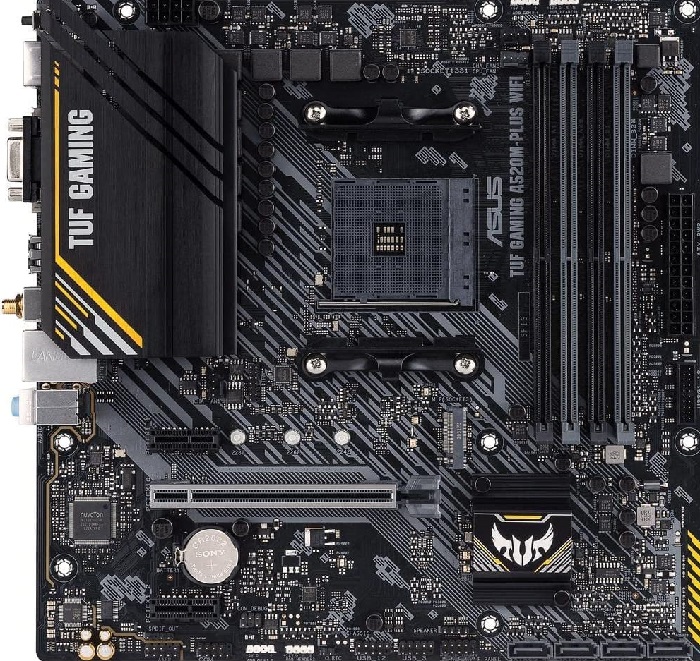A motherboard is the most important computer hardware component upon which other components are dependent. By providing connectivity between other hardware components, the motherboard ensures the optimum functionality of the system. While upgrading or building a PC system, it becomes important to select a suitable motherboard. Gigabyte and Asus are amongst the top global brands which develop motherboards.
Gigabyte and Asus develop and manufacture a wider range of motherboards. These brands ensure a certain quality and performance in their products, making them the favorites of consumers. While buying a motherboard, a usual question might arise for the buyers: which brand should they go for? To ease the selection process and make the users aware of these brands, the article will explain everything in detail.
Outline
ToggleGigabyte Motherboards

Gigabyte has introduced the Aorus series motherboards as their flagship offering. These motherboards are powerful and designed for extreme conditions. The Gaming motherboard series takes care of the mid-range segment. Gigabyte also assures budget-conscious buyers of reliable performance via Ultra-Durable (UD) series motherboards.
Asus Motherboards

The ROG motherboard series by Asus is tuned to deliver optimum performance. Being a flagship offering, this series is suitable for performance-hungry users. The TUF series is suitable for users who want good performance without overkill speciations. For the budget as well as the DIY enthusiasts, the PRIME series works the best. Asus also offers dedicated motherboards for professionals under the ProArt and Workstation series
Comparison Between Gigabyte Vs ASUS Motherboard
Both Gigabyte and Ausu offer a wide range of motherboards for every segment. Each motherboard performs on par with its competitor with noticeable differences. These differences might become the deal-breaker point for a user. To compare certain parameters of the motherboards, it becomes necessary to understand both brands and their offerings. This section will explain important specifications of the latest motherboards from Gigabyte and Asus.
| Parameter | Asus ROG Maximus Z790 Extreme | Gigabyte Aorus Z790 Master |
| Chipset | Z790 | Z790 |
| Socket | LGA 1700 | LGA 1700 |
| RAM generation and slots | DDR5 RAM with 4 slots | DDR5 RAM with 4 slots |
| RAM capacity | 128 GB | 128 GB |
| Clock speed | 5600 MHz | 5600 MHz |
| Memory slots | 4 | 4 |
| Form factor | E-ATX | E-ATX |
| Expansion slots | 2 x PCIe 5.0 x16 M.2
1 x PCIe 4.0 x4 M.2 |
1 x PCIe 5.0 x16 M.2
1 x PCIe 4.0 x4 M.2 |
| Bluetooth | 5.3 | 5.3 |
| WiFi | Wi-Fi 6E (802.11ax), Wi-Fi 6 (802.11ax), Wi-Fi 5 (802.11ac), and Wi-Fi 4 (802.11n) | Wi-Fi 6E (802.11ax), Wi-Fi 6 (802.11ax), Wi-Fi 5 (802.11ac), and Wi-Fi 4 (802.11n) |
1. Performance
We have seen in the above-mentioned table that both Gigabyte and Asus motherboards have almost similar specifications. However, the performance of these motherboards is a bit different in the actual working conditions. The Asus motherboards are obviously tuned for performance and hence deliver better output.
These motherboards further support overclocking to boost the performance of other components. Gigabyte motherboards do not stay behind in the performance category with features that help in enhancing the output of other components. It offers better cooling of the hardware components by supporting water-cooling components.
2. Design
The design of motherboards matters for two important things: better placement of the hardware components and adding aesthetic appeal to the transparent CPU case. Each brand has its own design language which helps in standing out against the competitors. Asus motherboards carry a combination of minimalistic design along with better branding via RGB lights. The design neither looks outdated nor too much.
Gigabyte motherboards are known for their futuristic design language and good combinations of RGB lights. These motherboards offer better customization of the design depending on the consumer’s taste. Users thereby select Asus or Gigabyte motherboards which suit their setup. The design of these motherboards offers ample space to install supporting hardware components.
3. Features
Both Gigabyte and Asus motherboards come loaded with several features as an upgrade over previous generation units. Based on the latest Z790 chipset, these motherboards are compatible with the Intel LGA 1700 and AMD AM5 sockets. It enables overclocking features to improve CPU performance further. They feature the latest DDR5 generation RAMs with clock speeds above 5000 MHz.
They also come equipped with the PCIe 5.0 interface along with M.2 slots for SSDs. Multiple types of GPU can be integrated with these units along with air/liquid coolers. They offer USB ports, Bluetooth, WiFi, Ethernet, etc options for faster connectivity. RGB lights, sound cars, etc are also offered on these units. Hence, both motherboards tie on the “features” section.
4. Software
Software compatibility is an important factor after hardware compatibility. The software helps run several commands by converting them into an understandable language for the PC system. The software varies from recreational games to professional 3D or graphic designing ones. Some software controls important system functions like overclocking, cooler functions, etc. Softwares like Asus ROG and Gigabyte Easytune fulfill the same purpose. Asus has the upper hand as it offers this software ready with the motherboard.
5. Form Factor Support
The form factors play an important role in installing the motherboard in a PC case. It refers to the shape and dimension of a motherboard. Several form factors offer unique layouts, sizes, and insulation support. The ATX form factor is a recent standard norm for almost every unit. It offers an increased number of expansion slots to connect multiple components. These form factors also have smaller versions called the Micro-ATX and Mini ITX units. The latest generation of both Asus and Gigabyte motherboards are larger E-ATX units that offer more space for the hardware components. The E-ATX form factor ensures a cleaner look and free space between components after installation.
6. Overclock Ability
The overclocking process is a crucial process that enhances the performance of the CPU. The motherboard must be compatible with overclocking to ensure proper functioning under changing variables. The system must remain stable under extreme conditions to avoid failure of the components.
Asus and Gigabyte motherboards of different segments are suitable for overclocking processes. The high-end units of Asus offer better overclocking compared to Gigabyte units. Gigabyte composites by offering customization of certain variables in the overclocking process. Gigabyte has a wide range of overclockable units in the lower price Segment.
7. Price
The overall pricing of the motherboard acts as a deal breaker for certain users. Asus and Gigabyte offer motherboards for every segment. Users can select an option that fits their needs and budget requirements. Asus motherboards carry a premium price tag compared to the Gigabyte units. Asus, however, assures the user more features to compensate for the price tag. Gigabyte motherboards are priced lower in the midrange and budget segments. These units suit users who do not want a motherboard with overkill specifications and higher pricing.
8. Warranty
Warranty is an important motherboard factor and sometimes becomes a deal-breaker factor. It offers a safety assurance or covers against accidental damage to the motherboard. The warranty period also gives the user peace of mind about the brand’s quality. Both Asus and Gigabytes offer a warranty on their motherboards. The warranty covers repairs and replacement of the units under certain terms and conditions. Asus offers a warranty of over 3 years for its motherboards. Gigabyte offers a warranty of 1 to 3 years with extension programs. Asus gets the upper hand since it allows a maximum warranty of 5 years under the extension program.
Ideal Option For Gaming
Asus motherboards are designed purely for intensive gaming purposes. These motherboards are compatible with the latest CPU, GPU, RAM, etc components to ensure a lag-free gaming experience. Asus units also offer better customization with other components. This helps in using different components for an optimum performance output.
Thanks to their aggressive pricing, Gigabyte’s high-end motherboards are a good alternative to the Asus units. These units churn out an acceptable performance under extreme gaming. Gigabyte motherboards are, however, not compatible with some of the AMD Ryzen processors. The user can select Asus or Gigabyte motherboards depending on the required performance.
Ideal Option For System Building
The requirements for building a system differ a little bit, compared to the gaming purpose. A motherboard with better design and compatibility is preferred when building a system. Depending on their needs, it assures the user of updating the hardware component in the future. Both Gigabyte and Asus offer a wide range of motherboards for the system-building process.
The Asus unit offers a ton of features compared to the Gigabyte units. These features however come with a premium price tag. Gigabyte units offer more flexibility which helps in upgrading the components. Factors like the number of slots, socket compatibility, etc, are given more importance in the system-building process. The user can choose between Asus and Gigabyte since both are suitable for system upgradation.
Motherboard – FAQs
Ans: Selecting an ideal motherboard for a processor involves several factors. The motherboard must be compatible with the processor and offer a compatible CPU socket. It should also support the latest storage drives and RAM for better data transmission speed. The connectivity technologies, display support, and many other factors must be offered by the motherboard.
Ans: Motherboard maintenance is the most neglected yet most important aspect of durability. The motherboard attracts a lot of dirt and debris under running conditions. The dust must be cleaned every 3 to 6 months to keep the components in working condition. Other maintenance activities like audio and visual inspection, driver updates, temperature monitoring, and power supply stability help maintain the motherboard.
Ans: The reliability of the motherboard is dependent on the brand’s production and development process. Brands opt out of premium materials and better R&D processes to ensure reliability and durability. Asus is an older brand than Gigabyte, yet both are known for their high-quality products. Ultimately, it depends on the user to choose a motherboard from any brand.
Ans: ASUS and Gigabyte assure their consumers of the best quality in their products. These motherboards are tested by the brand as well as the older consumers. Using the motherboard in a well-maintained manner will surely increase its lifespan. The user must ensure a stable power supply, high-quality components, and drivers are used for the motherboards. This helps in keeping the motherboard operational for 5 to 8 years.
Ans: Several factors contribute to the popularity of Asus motherboards. The brand has been present in the computer hardware market for a long time. It has introduced a number of high-quality products for PC systems. These products have proven their reliability and performance over the years. Various offerings in every segment ensure every user gets to build a better system. Other factors like good after-sales support have made it popular amongst the users.
Conclusion
Motherboards have developed at a rapid rate in recent years. A brand like Asus and Gigabyte has risen above other brands by offering reliable products. Thanks to their high-quality material, These products are not lacking in the performance department. By offering more features, these brands have become popular in every segment. This article tries to explain the various aspects and comparisons between Asus and Gigabyte motherboards. This explanation helps the user in selecting the right motherboard for their system.

